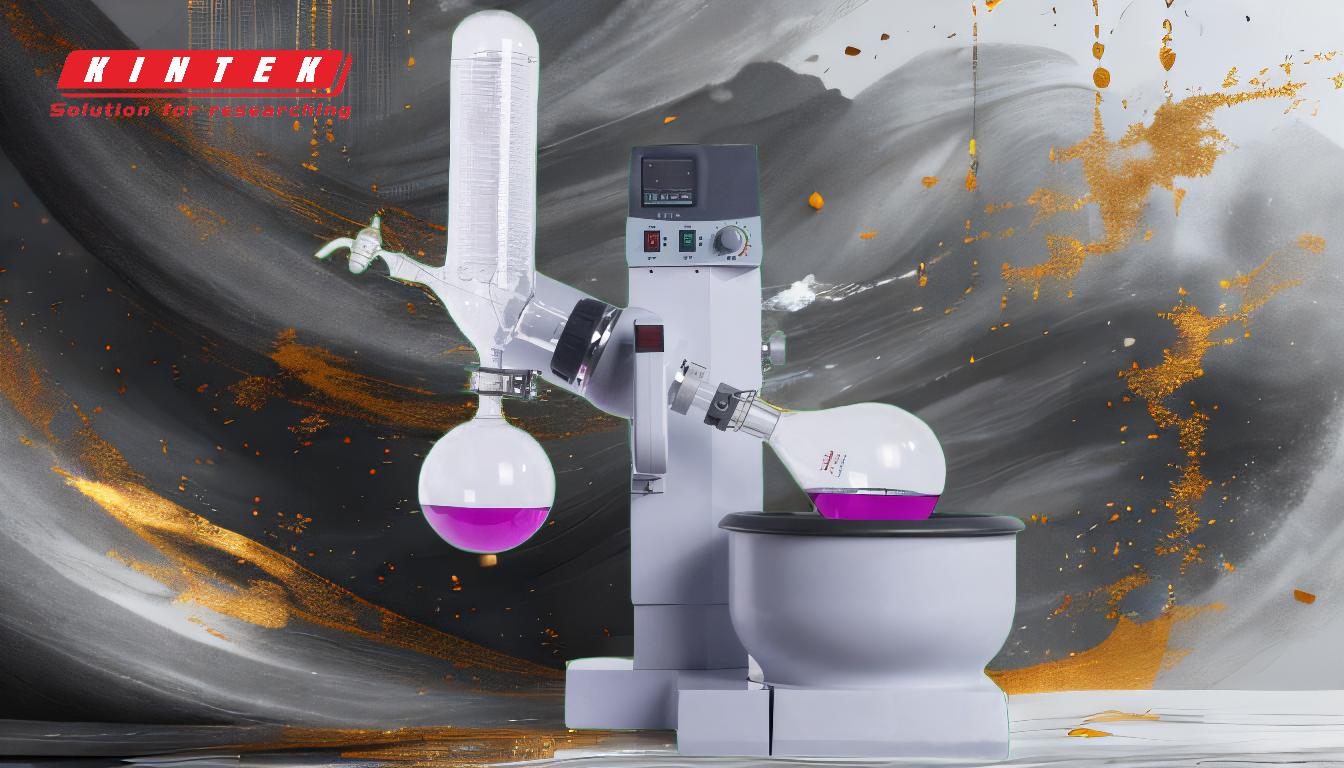The rotovap procedure, or rotary evaporation, is a technique used to efficiently remove solvents from a solution under reduced pressure, which lowers the boiling point of the solvent. This method is widely used in laboratories for its ability to preserve the integrity of the solution by avoiding oxidation and maintaining the original essence of the compounds. The process involves adding the solution to a rotating flask, creating a vacuum to reduce pressure, heating the solution in a water bath, and condensing the evaporated solvent in a cooled chamber. The condensed solvent is then collected in a separate flask, leaving behind the concentrated solution. This method is particularly useful for sensitive materials and is commonly employed in natural product extraction and chemical manufacturing.
Key Points Explained:

-
Preparation of the Solution and Equipment:
- The solution to be concentrated or purified is added to the starting flask of the rotary evaporator.
- A water bath is prepared and maintained at a specific temperature, which is typically close to the boiling point of the solvent under reduced pressure.
-
Creation of a Vacuum:
- A vacuum pump is activated to create a low-pressure environment within the rotary evaporator system.
- The reduced pressure lowers the boiling point of the solvent, allowing it to evaporate at a lower temperature than it would under normal atmospheric pressure.
-
Rotation of the Flask:
- The flask containing the solution is rotated to increase the surface area of the solution exposed to the heat.
- This rotation ensures even heating and mixing, which speeds up the evaporation process and prevents localized overheating.
-
Evaporation and Condensation:
- As the solution is heated and rotated, the solvent begins to evaporate.
- The evaporated solvent travels to a condenser chamber, where it is cooled by a cold finger or similar cooling mechanism.
- The cooled solvent condenses back into liquid form and is collected in a receiving flask.
-
Collection of the Solvent:
- The condensed solvent is collected in a separate flask, while the remaining solution in the rotating flask becomes more concentrated.
- This separation is crucial for processes that require the removal of solvents without altering the chemical composition of the remaining solution.
-
Completion of the Process:
- Once the desired level of concentration or solvent removal is achieved, the evaporator is shut down.
- Atmospheric pressure is reintroduced to the system to prevent the flask from falling off during the final stages of rotation.
- The concentrated solution is then ready for further processing or analysis.
-
Advantages of Rotary Evaporation:
- Efficiency: The process is faster than traditional distillation due to the increased surface area and reduced pressure.
- Preservation of Compounds: The lower temperatures used in the process help preserve heat-sensitive compounds, preventing degradation.
- Avoidance of Oxidation: The reduced pressure environment minimizes the risk of oxidation, which can alter the chemical properties of the solution.
-
Applications:
- Natural Product Extraction: Used in the extraction of essential oils, flavors, and other natural compounds.
- Chemical Manufacturing: Employed in the purification and concentration of chemical solutions.
- Pharmaceuticals: Utilized in the preparation of drug formulations where solvent removal is critical.
In summary, the rotovap procedure is a precise and efficient method for solvent removal, leveraging reduced pressure and controlled heating to preserve the integrity of the solution. Its applications span various industries, making it an indispensable tool in modern laboratories.
Summary Table:
| Step | Description |
|---|---|
| Preparation | Add solution to the flask; prepare water bath at optimal temperature. |
| Vacuum Creation | Activate vacuum pump to lower pressure and reduce solvent boiling point. |
| Flask Rotation | Rotate flask to increase surface area, ensuring even heating and faster evaporation. |
| Evaporation & Condensation | Solvent evaporates, condenses in a cooled chamber, and is collected separately. |
| Solvent Collection | Collect condensed solvent; remaining solution becomes concentrated. |
| Process Completion | Shut down evaporator, reintroduce atmospheric pressure, and retrieve solution. |
| Advantages | Efficiency, preservation of heat-sensitive compounds, and avoidance of oxidation. |
| Applications | Natural product extraction, chemical manufacturing, and pharmaceuticals. |
Discover how the rotovap procedure can optimize your lab processes—contact our experts today!












